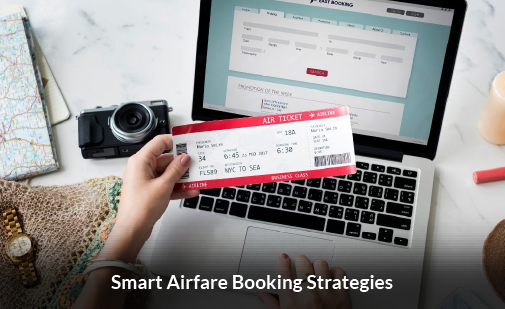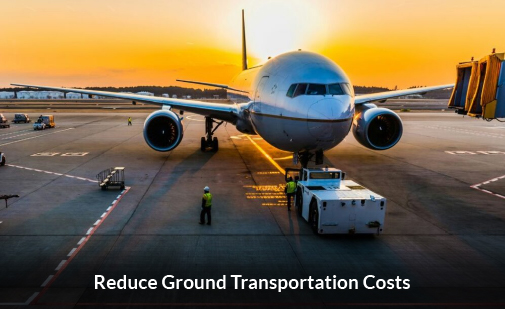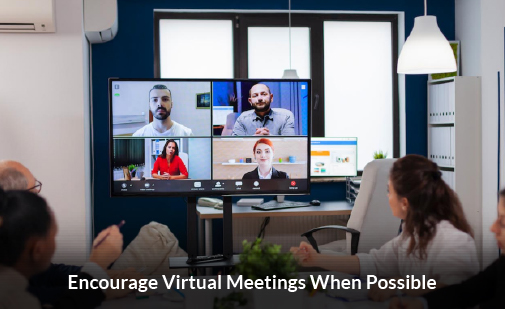While it would be a priority for most companies to reduce corporate travel expenses, realism should be put into view lest it leads to unpaid staff dissatisfaction plus productivity deficits and the missed associated business opportunities. It is indeed the strategic balance where a company may choose to go about some corporate travel-related cost-cutting while maintaining accessibility, efficiency, and comfort.
Companies can optimize their costs from the corporate travel programs plus selecting their flights and accommodations, facilitated by seamless travel experiences. This guide further discusses the implementation of smart strategies for reducing the cost of corporate travel without sacrificing comfort, yet maintaining efficiency and the well-being of the traveler.
Implement a Strategic Travel Policy
A well-defined travel policy is the foundation of cost-efficient corporate travel. By setting clear guidelines, companies can manage expenses while maintaining traveler comfort. Key elements to include-
Preferred Airlines and Hotels- Partnering with precise airlines and hotel chains can lead to discounts and additional benefits such as favorable upgrades or lounge access.
Booking Guidelines- Always choose early bookings to ensure lower rates and better availability.
Reimbursement Policies- Clear expense policies prevent overspending and ensure employees make cost-conscious decisions.
Class of Travel- Define when business class is appropriate and when economy class suffices.
Pro Tip- Use corporate travel management platforms to automate policy enforcement and streamline approvals.
Leverage Corporate Travel Programs and Discounts
Many airlines, hotel chains, and car rental companies offer loyalty programs that reward frequent travelers with points, upgrades, and exclusive deals. Companies should-
Register in corporate loyalty programs to access huge discounts.
Encourage employees to use personal frequent flyer accounts for added benefits.
Bargain special rates with preferred dealers for consistent cost savings.
Pro Tip- Combining personal and corporate loyalty points can lead to enhanced perks for employees without additional costs to the company.
Upgrade Accommodation Choices
Luxury hotels are not the only comfortable option for corporate travelers. Cost-effective alternatives include-
Business-Class Hotels- Many mid-range hotels offer business comforts like high-speed internet, meeting rooms, and fitness centers at lower prices.
Corporate Housing & Extended Stays- For long-term travel, serviced apartments or extended-stay hotels provide better value than nightly hotel rates.
Hotel Comparison Tools- Use corporate travel platforms to find the best deals without compromising quality.
Pro Tip- Booking accommodations with complimentary breakfast and internet reduces out-of-pocket expenses for employees.
Smart Airfare Booking Strategies
Airfare is one of the biggest travel expenses, but careful planning can produce effective savings-
Book in Advance- Last-minute flights are expensive; book 3–6 weeks ahead for better rates.
Use Adjustable Dates- Flights on Tuesdays and Wednesdays are generally cheaper than weekend departures.
Choose for Connecting Flights- Non-direct flights are often more affordable.
Leverage Fare Alerts- Set up notifications to book when fares drop.
Pro Tip- If possible, use a mix of economy and bonus economy seats to balance cost and comfort.
Reduce Ground Transportation Costs
Ground transportation can quickly become an undercover cost in corporate travel. To cut expenditures without inconvenience-
Use Ride-Sharing Services- Instead of taxis, services like Uber for Business offer controlled spending with corporate billing.
Public Transport- Encourage employees to use subways or trains when practical.
Car Rental Alternatives- Renting a car for short trips may not always be necessary if public transit is efficient.
Pro Tip- If renting a car, book through the company’s preferred vendor for discounted corporate rates.
Encourage Virtual Meetings When Possible
Not every business trip is important. With modern technology, many meetings can be completed online, reducing travel frequency. Companies should-
Use Video Conferencing- Platforms like Zoom and Microsoft Teams offer high-quality virtual meeting options.
Assess Travel Necessity- Consider if an in-person visit will yield significant benefits before approving travel.
Implement a Hybrid Approach- Combine web meetings and in-person meetings to reduce overall travel needs.
Pro Tip- Travel for high-value engagements and use virtual meetings for routine updates to optimize costs.
Provide Travel Expense Management Tools
An efficient expense management system ensures accurate reporting and control over travel costs. Key features to look for-
Expense Tracking- There are many apps. You can download one of them and keep your expenses in check.
Corporate Credit Cards- Combined billing makes it easier to track expenses and avoid money differences.
Real-Time Spending checking- Keeping a check on travel expenses in real time helps companies make informed cost-cutting decisions.
Pro Tip- Researching past travel expense data can help identify unwanted expenditures and areas for improvement.
Ensure Employee Comfort Without Excessive Costs
Cost-cutting should not trade off against employee well-being. Comfortable travelers are more productive and satisfied. Ways to achieve this include-
Lounge Access- Consider investing in airport lounge memberships for frequent work travelers.
Per Diem Allowances- Provide reasonable daily spending limits to avoid stress over food and transport expenses.
Wellness Considerations- Choose hotels with fitness facilities and provide access to healthy meal options.
Pro Tip- Comfortable, well-rested employees perform better—prioritize their well-being within budget limits.
Implement Sustainable Travel Practices
Sustainability can align with cost-cutting when implemented wisely. Strategies include-
Choosing Eco-Friendly Hotels- Many hotels now offer discounts for corporate clients, focusing on giving them good facilities to become their all-time favorite partners.
Encouraging Train Travel- Traveling by train is often cheaper and more environmentally friendly than flights for short distances.
Reducing Paper Usage- Use digital schedules and e-receipts to minimize waste.
Pro Tip- An endurable travel policy can improve a company’s corporate social responsibility image while saving costs.
Conduct Regular Travel Spend Audits
Regularly reviewing travel expenses helps identify areas where further cost-cutting is possible. Companies should-
Research travel data to find patterns of overspending.
Adjust policies based on real usage and cost trends.
Understand employee feedback to ensure cost-cutting measures do not negatively impact travel experiences.
Pro Tip- A travel spending review every quarter ensures that policies remain relevant and effective.
Smarter Travel Spending for Maximum Value
Strategic corporate travel cost optimization with wellness is more than just good travel policies; it's about effective use of loyalty programs, choice of flights and places to stay optimized for pricing, and technology as a part of the process of streamlining corporate expenditure on business travel and improving the well-being of travelers; it results in higher productivity leading to better business outcomes and happier workers.
The need to cut costs should not be seen as a restriction; it should be taken as an opportunity to perfect the travel policies from the inside to find last-mile savings while keeping the corporate travel experience seamless and comfortable for all stakeholders.


















